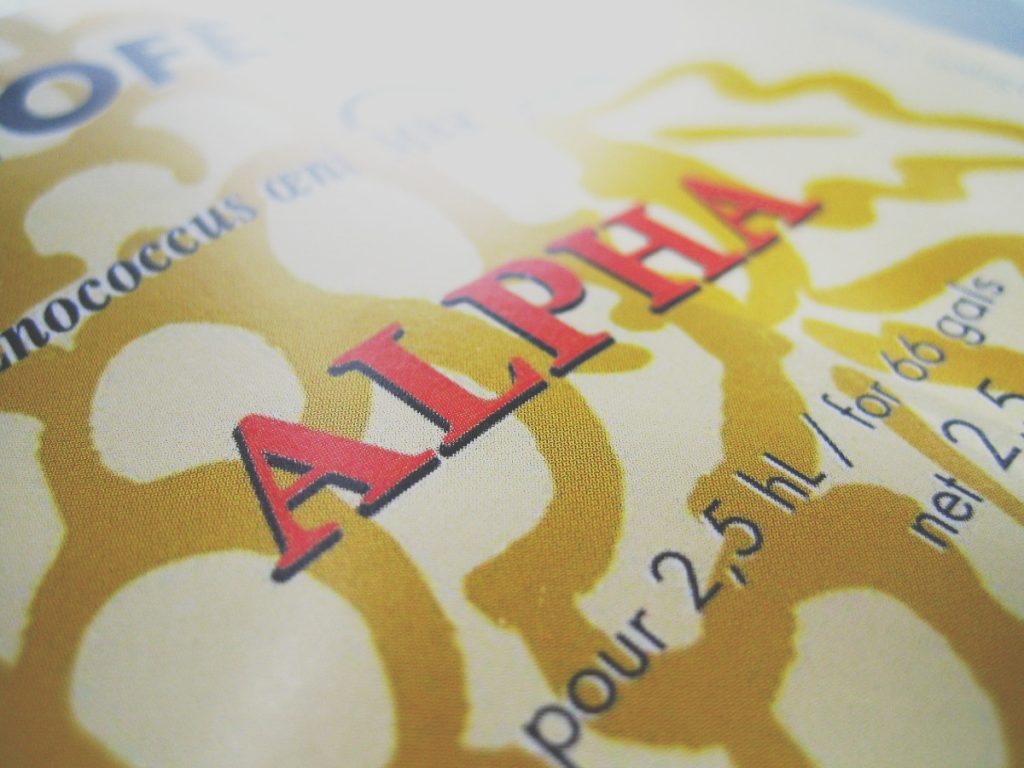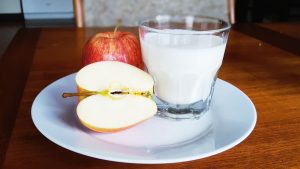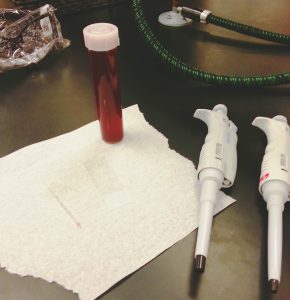
Malolactic fermentation (MLF) is a common processing technique used to biologically convert the malic acid to lactic acid and carbon dioxide (Krieger 2005). The conversion of malic to lactic acid is considered a deacidification technique. MLF is conducted through proliferation of native lactic acid bacteria (LAB), of which the three existing genera in wine are Lactobacillus, Oenococcus, and Pediococcus (Krieger 2005, Iland et al. 2007), or by inoculation of commercial LAB strains. The process of MLF has several chemical and sensory alterations to the wine (Waterhouse et al. 2016):
- Decrease in titratable acidity (TA).
- Increase in pH.
- Decrease in sourness of the wine.
- Potential development of the “buttery” aroma or flavor due to increased diacetyl production.
Commercial strains, Oenococcus oeni, are often preferred as this strain of LAB best conducts MLF (Waterhouse et al. 2016). O. oeni is relatively predictable in its ability to convert malic to lactic acid, and several commercial strains have various capabilities of producing the byproduct, diacetyl. Diacetyl gives rise to a buttery flavor or aroma that is desired in some styles of wine, such as oak aged Chardonnay.
When to Inoculate for MLF
LAB inoculation can be integrated into wine processing at several stages of production:
- Before primary fermentation,
- During primary fermentation,
- Near the end of primary fermentation,
- After primary fermentation is complete (Iland et al. 2007).
Each stage in which LAB can be added to the wine will offer a number of advantages and disadvantages to the winemaker. Ultimately, when LAB inoculation occurs can affect wine quality.
When winemakers add LAB to the wine, if desired, is a stylistic choice by the winemaker. There are some styles of wine that may not require MLF (e.g., unoaked Chardonnay), integrate partial MLF (e.g., sparkling wines), and others that encourage a full conversion of malic acid through MLF (e.g., many red wine blends). In cooler grape growing regions, the utilization of MLF is a natural deacidification process that can help decrease the perception of acidity, or sourness, in the wine. Malic acid, the primary acid affiliated with apples, has a much harsher taste than lactic acid, the primary acid in milk. In general, most American consumers tend to enjoy wines with moderate acidity (Krieger 2005), and MLF may be a practical tool to manipulate the wine’s acidity and stability.

Native or Spontaneous MLF
Additionally, some winemakers opt to utilize the native LAB to undergo MLF, though this can be unpredictable and tricky. Some wine processing techniques, such as juice clarification, can aid in the removal of native LAB and inhibit an adequate biomass of cells from forming to undergo MLF (Krieger 2005). Furthermore, some strains of native LAB can give rise to off-flavors or spoilage characteristics that may degrade wine quality.
Factors that Inhibit LAB
Nonetheless, even when using commercial strains of LAB, MLF can offer several challenges to winemakers. MLF is not always easy to complete efficiently. Several factors can contribute to a sluggish or stuck MLF including:
- Inhibition by sulfur dioxide, alcohol, temperature or oxygen.
- Inadequate nutrition.
- Competition from other microorganisms (e.g., acetic acid bacteria, native LAB).
- Presence of copper ions or residual pesticides (Iland et al. 2007).
A stuck MLF can be a difficult winemaking situation. Wines are usually left unprotected with very little sulfur dioxide in the wine. Additionally, wines are usually maintained within the ideal LAB growing temperature, around 68°F. However, this warmer temperature is also ideal for a number of potential spoilage microorganisms to grow. Warm temperatures and a lack of adequate antimicrobial protection offer ideal conditions for growth of spoilage microorganisms.
How to Monitor MLF
Many wineries find it affordable and convenient to monitor MLF progression through paper chromatography. Both Enartis USA and Midwest Supplies offer decent protocols for paper chromatography that are available online and free.
However, to ensure that your MLF is completed, it is best to use enzymatic analysis to determine the concentration of malic acid and lactic acid in your wine. While this analysis can be completed in a winery’s lab with access to a spectrophotometer, proper pipettes, and an enzymatic kit, wines can also be submitted to a commercial wine lab for completion confirmation.

What to do if you are dealing with a Stuck MLF
Though challenging, a number of potential solutions exist for a stuck MLF. If you’re currently dealing with a stuck or sluggish MLF, I’ve released a “Solutions for Stuck MLF” Production Guide within the DG Winemking Learning Center.
Fact sheets are available to DG Winemaking clients that have signed up for a consulting service package. If you have interest in accessing premium content in the DG Winemaking Learning Center, please inquire at info@dgwinemaking.com today!
References
Iland, P., P. Grbin, M. Grinbergs, L. Schmidtke, and A. Soden. 2007. Microbiological Analysis of Grapes and Wine: Techniques and Concepts. Patrick Iland Wine Promotions Pty. Ltd. Australia. ISBN: 978-0-9581605-3-7
Krieger, S. 2005. The history of malolactic bacteria in wine. In Malolactic Fermentation in Wine: Understanding the Science and the Practice. Lallemand, Inc. Montreal, Canada. ISBN: 0-9739147-0-X
Waterhouse, A.L., G.L. Sacks, and D.W. Jeffery. 2016. Understanding Wine Chemistry. John Wiley and Sons, Ltd. United Kingdom. ISBN: 978-1-118-62780-8
